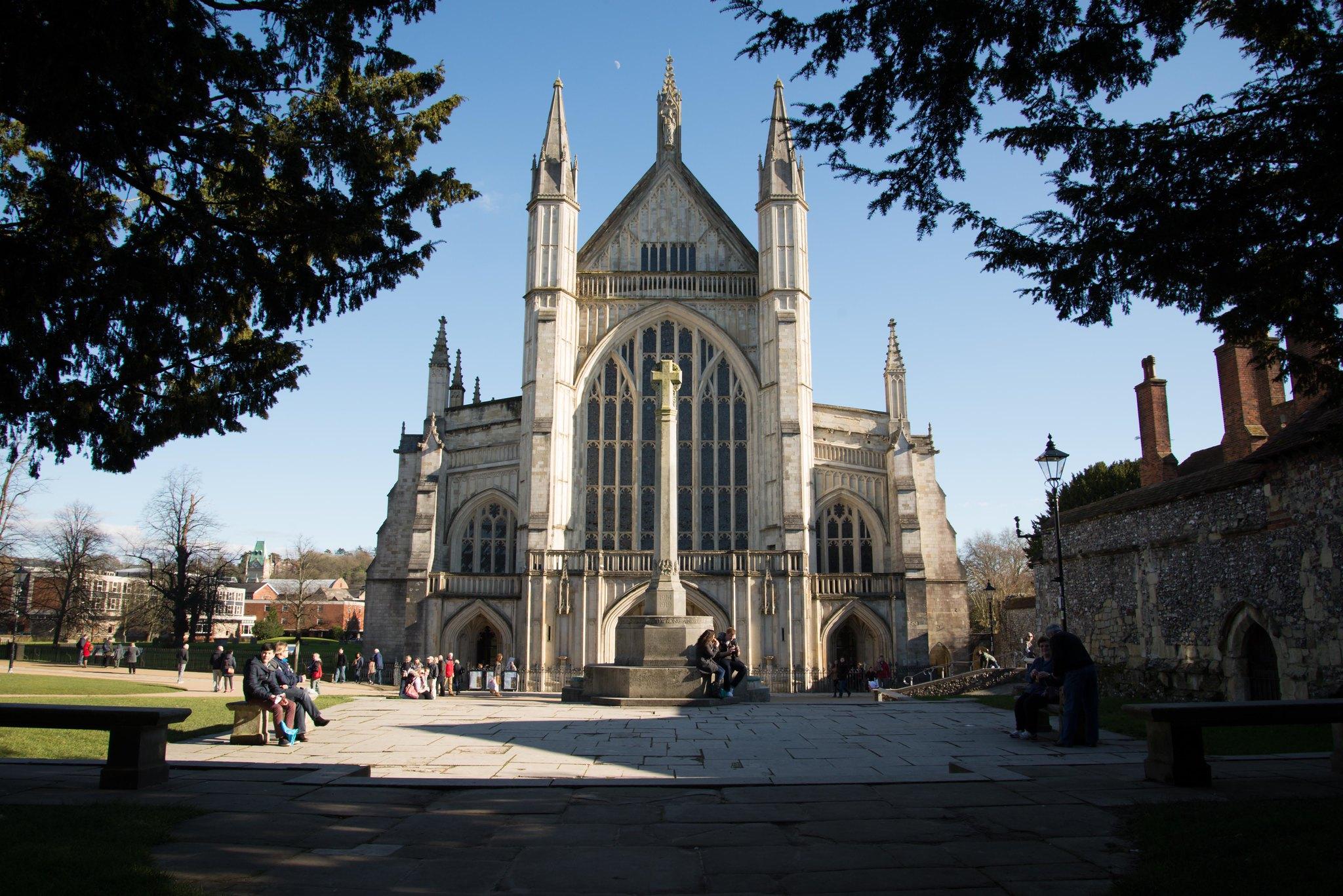St Swithun-upon-Kingsgate
Winchester, Hampshire

Fifteen centuries of English history lie behind the massive Cathedral you see today. It stands at the heart of historic Winchester, once the seat of Anglo-Saxon and Norman royal power, on the site of an early Christian church. It’s been a place of worship ever since.
Winchester, Hampshire
It stands at the heart of historic Winchester, once the seat of Anglo Saxon and Norman royal power, on the site of an early Christian church. It’s been a place of worship ever since.
A walk round the Cathedral takes you through centuries of English church architecture, from the massive vaults of its early Norman crypt to the ornate glories of its Renaissance chantry chapels. It’s also home to some great works of art, including paintings, sculptures and carvings.
The Cathedral is home to some particularly rare, precious and beautiful items, each with a special place in its long history. These outstanding national treasures form a part of a unique heritage which we seek to share today and conserve for the future.
The Cathedral has a rich history of links with royalty. Winchester was the capital of Anglo Saxon Wessex, and Old Minster the burial place of its West Saxon kings. When William the Conqueror invaded England in 1066, he was quick to stamp Norman power on the city by building the magnificent Cathedral we see today.
Over the centuries, many famous names have become part of the Cathedral’s history. Jane Austen is now celebrated as one of England’s greatest novelists, but when she was buried in the Cathedral in 1817 at the age of 41, her original memorial stone made no mention of her books. You can read the brass plaque erected in 1872 to redress the omission in the north side aisle and an illustrated exhibition detailing Jane Austen's life, work and death in Hampshire, is displayed beside her grave.
The Ding Dong Bell rhyme was first recorded in 1580 by the organist of Winchester Cathedral, John Lant. The expression Ding Dong Bell was used by Shakespeare in several of his plays. However most of those works were published only in 1623 in the First Folio (years after his death) and the exact use or meaning of this rhyme is uncertain.
Winchester, Hampshire
Winchester, Hampshire
The chapel was built between the years 1387 and 1395 to designs by William Wynford, with Hugh Herland responsible for the traceried wooden ceiling and Thomas of Oxford for the glazing.
Winchester, Hampshire
St Bartholomew’s was founded in 1110 as the church for the lay workers at Hyde Abbey, where the remains of King Alfred the Great are believed to have been re-interred.